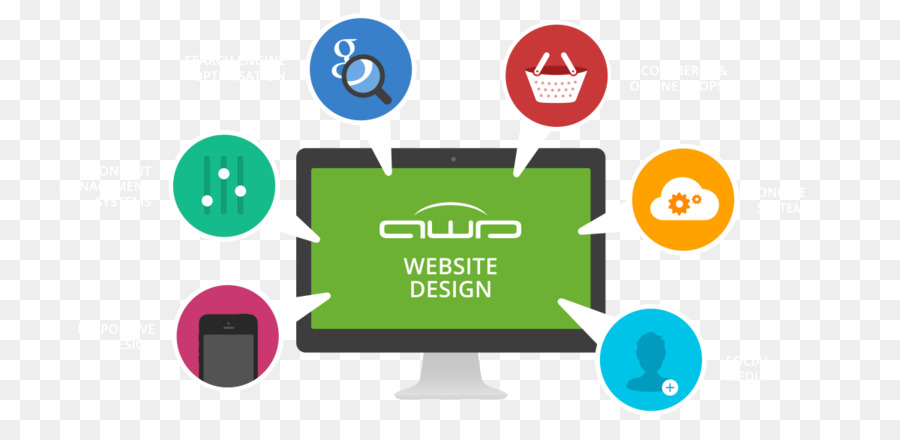Prepare To Trip With Time And Discover Exactly How Sites Have Become A Lot More Advanced, Easy To Use, And Aesthetically Sensational
Prepare To Trip With Time And Discover Exactly How Sites Have Become A Lot More Advanced, Easy To Use, And Aesthetically Sensational
Blog Article
Uploaded By-Kinney Peters
In the past, web sites were basic and focused on details. Navigation was direct, and style was for desktop computers. Currently, user experience is crucial. Data guides styles for easy navigating. Receptive layouts fit different devices. Today, dark mode lowers pressure, and minimal food selections enhance navigating. Interactive features involve users, and strong visuals attract attention. AI integration increases engagement. See just how style has advanced to boost your online trip.
Early Days of Web Design
In the very early days of website design, simpleness preponderated. Web sites were fundamental, with limited shades, typefaces, and formats. The focus was on providing details as opposed to flashy visuals. Users accessed the internet through sluggish dial-up connections, so rate and functionality were crucial.
Navigation food selections were straightforward, normally situated at the top or side of the page. Websites were developed for computer, as mobile surfing wasn't yet widespread. Material was king, and designers prioritized very easy readability over intricate style components.
HTML was the primary coding language used, and developers had to function within its constraints. Computer animations and interactive functions were marginal contrasted to today's criteria. Sites were fixed, with little vibrant web content or personalized individual experiences.
Increase of User-Focused Layout
With the advancement of web site style, a change towards user-focused design concepts has come to be increasingly prominent. Today, developing websites that focus on individual experience is vital for engaging visitors and accomplishing organization objectives. User-focused style involves recognizing the needs, choices, and actions of your target audience to tailor the website's layout, content, and includes as necessary.
Developers now perform complete research study, such as user studies and use screening, to collect understandings and responses directly from individuals. This data-driven approach assists in producing intuitive navigation, clear calls-to-action, and visually attractive user interfaces that reverberate with site visitors. By putting the customer at the center of the layout process, sites can provide a more tailored and satisfying experience.
Responsive design has likewise become an essential facet of user-focused design, making sure that sites are maximized for numerous gadgets and display dimensions. This adaptability enhances access and usability, dealing with the varied means customers interact with web sites today. Basically, https://www.searchenginejournal.com/top-youtube-channels-tips/409657/ of user-focused style symbolizes a shift in the direction of creating electronic experiences that focus on the requirements and expectations of completion individual.
Modern Trends in Web Design
Check out the latest patterns shaping website design today. One noticeable trend is dark mode style, offering a sleek and modern-day appearance while lowering eye strain in low-light settings. One more vital trend is minimal navigating, simplifying food selections and improving individual experience by concentrating on essential elements. Integrating micro-interactions, such as computer animated switches or scrolling results, can produce a much more appealing and interactive site. Receptive design continues to be crucial, making sure smooth individual experiences throughout different devices. Furthermore, making use of vibrant typography and unbalanced layouts can add visual passion and draw attention to details web content.
Integrating AI innovation, like chatbots for customer support or tailored recommendations, enhances customer engagement and improves procedures. Accessibility has likewise end up being a significant pattern, with developers prioritizing inclusive layout techniques to deal with diverse individual demands. Accepting sustainability by optimizing website performance for rate and effectiveness is an additional emerging pattern in web design. Collaborating with individual comments and information analytics to iterate and improve design continually is vital for remaining pertinent in the ever-evolving electronic landscape. By accepting these modern patterns, you can produce a visually attractive, user-friendly internet site that reverberates with your audience.
Conclusion
As you review the evolution of internet site design from the early days to now, you can see exactly how user-focused layout has actually ended up being the driving pressure behind modern-day fads.
Accept the trip of adjustment and adaptation in website design, constantly maintaining the user experience at the forefront.
Keep existing with the most up to date fads and innovations, and never ever quit developing your approach to create aesthetically magnificent and user-friendly websites.
Advance, adjust, and create - the future of web design is in your hands.
